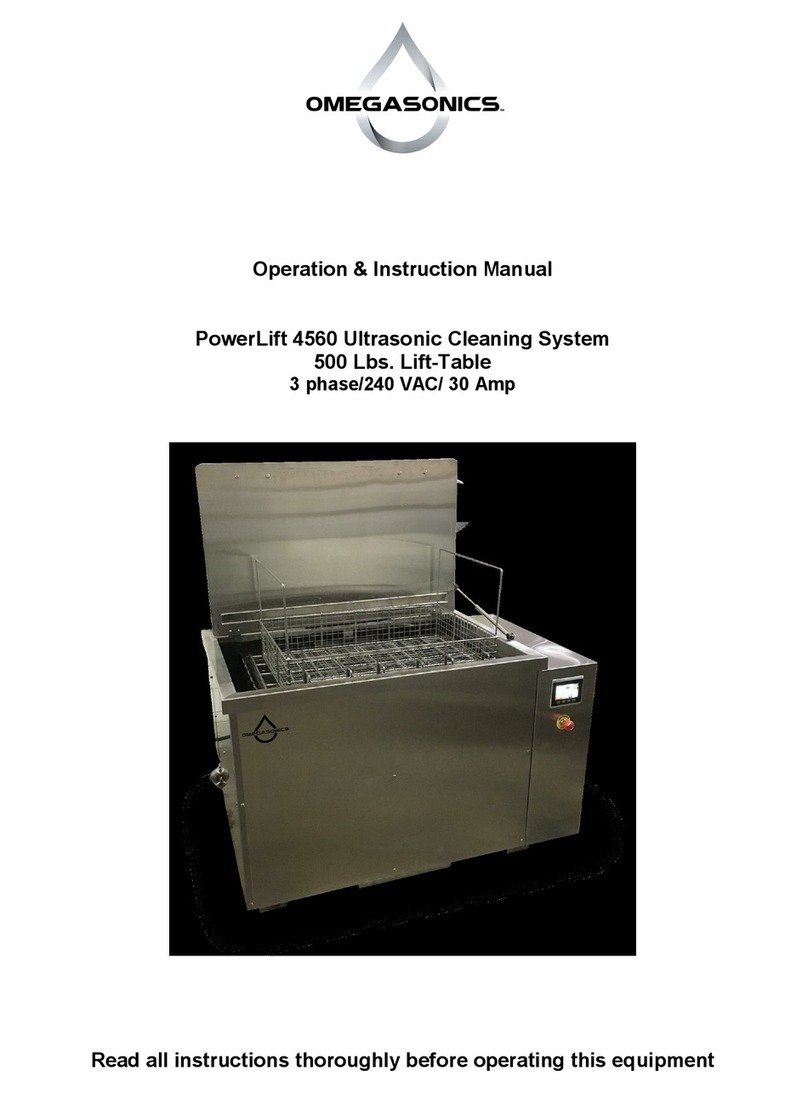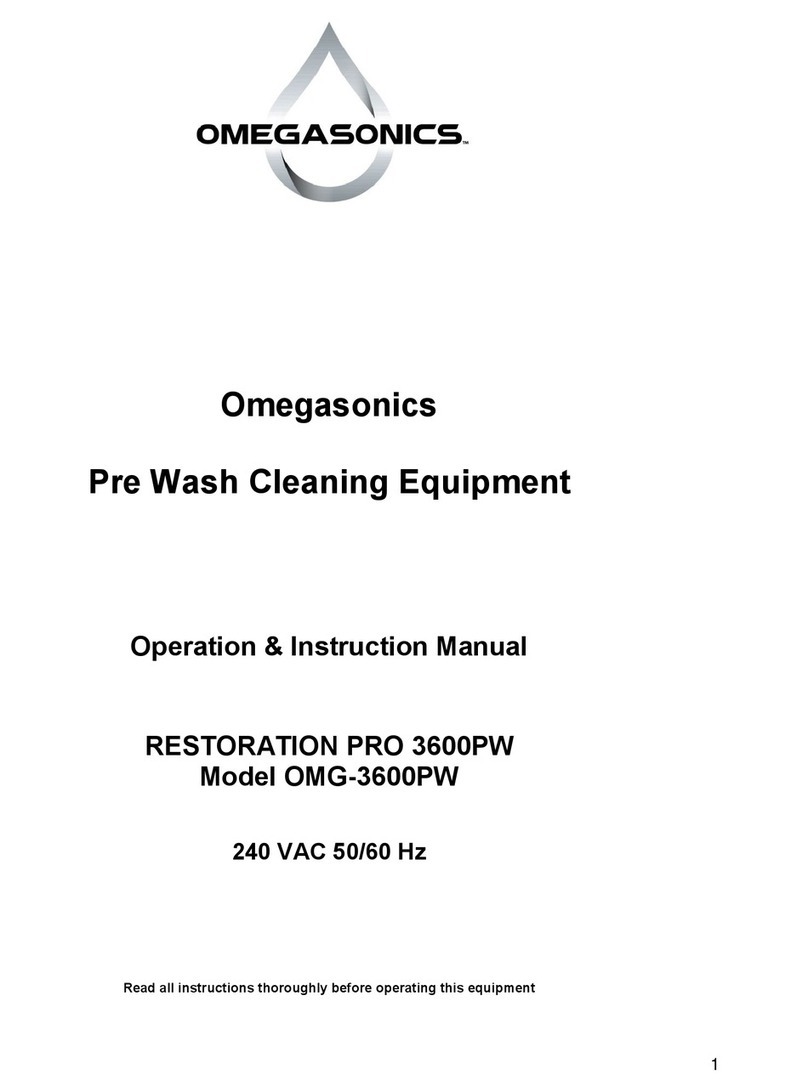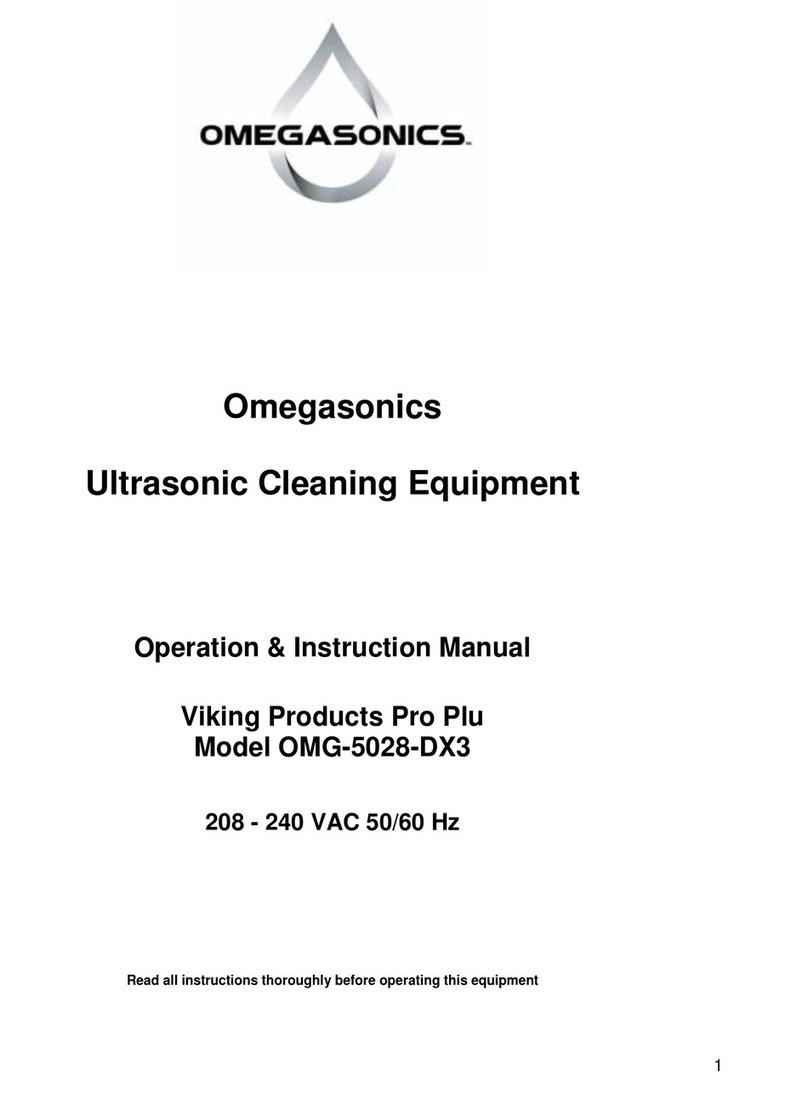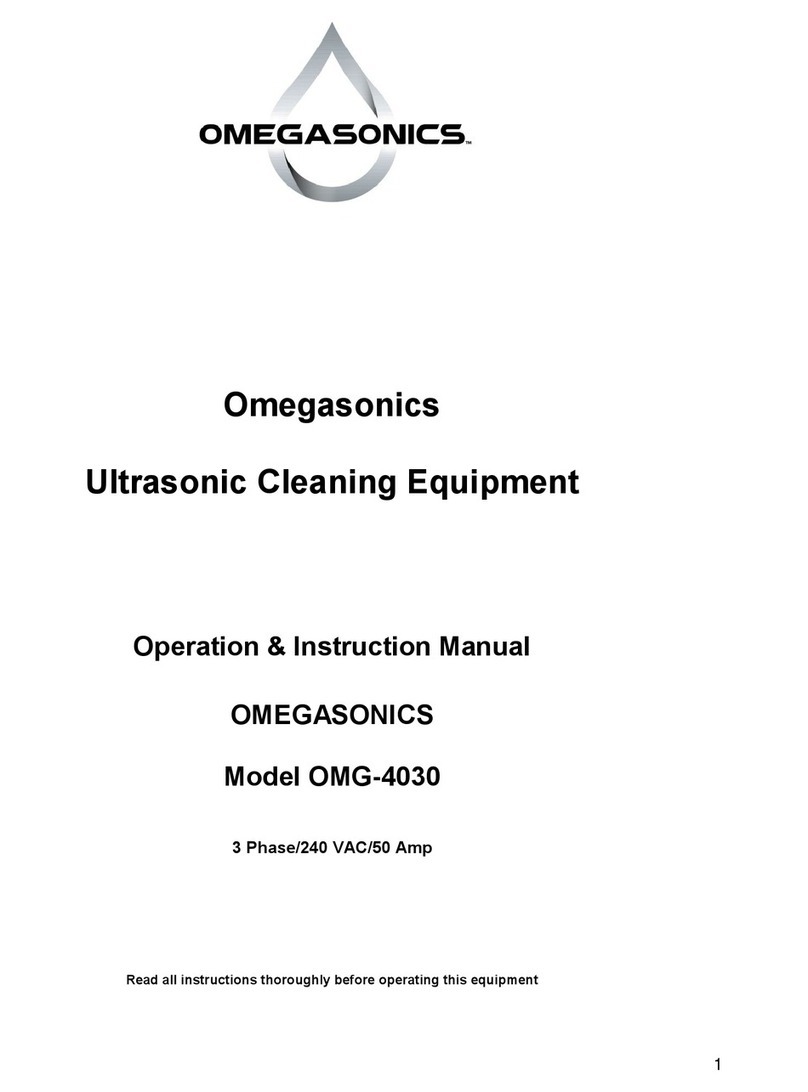
8
Digital Temperature
Knowing Your Temperature Controller
·PV: This upper display indicates the
actual Process Value (or current
temperature) of the bath and cannot
be changed manually.
·SV: The lower display indicates the
Set Value or desired bath
temperature. This Set Value is
adjustable.
·ALM 1: If this light is on, it means
that the machine is currently heating.
It will shut off once the desired
temperature has been reached.
·OUT: If this light is on, it means that
the bath temperature is out of the
preset range of 50˚F - 160˚F. There
is a 5˚hysteresis which means that
the heating mechanism (and the
OUT light) will go on/off based on a
5˚variance. This serves as a buffer
to protect the life of the motor
contactor.
·AT, ALM 2: Omegasonics use only.
·Return Key
Operation
·The temperature controller is factory set at 150˚F.
·To change the Set Value, lightly press the up arrow key to increase or lightly press
the down arrow key to decrease the value. Pressing and holding down either arrow
key will change the displayed value rapidly.
·Upon changing the Set Value, this lower display will flicker indicating the new value
is not set. To make this value permanent, press the RETURN Key .
·Experience shows that the optimum ultrasonic cleaning temperature for most
applications is 120˚F - 160˚F.
·When ready to activate the heat, turn the selector switch marked HEAT to the ON
position.
·The heat circuit and the ultrasound can be operated simultaneously.
If increased or decreased security is desired, please contact technical support at
Omegasonics to receive instructions.































